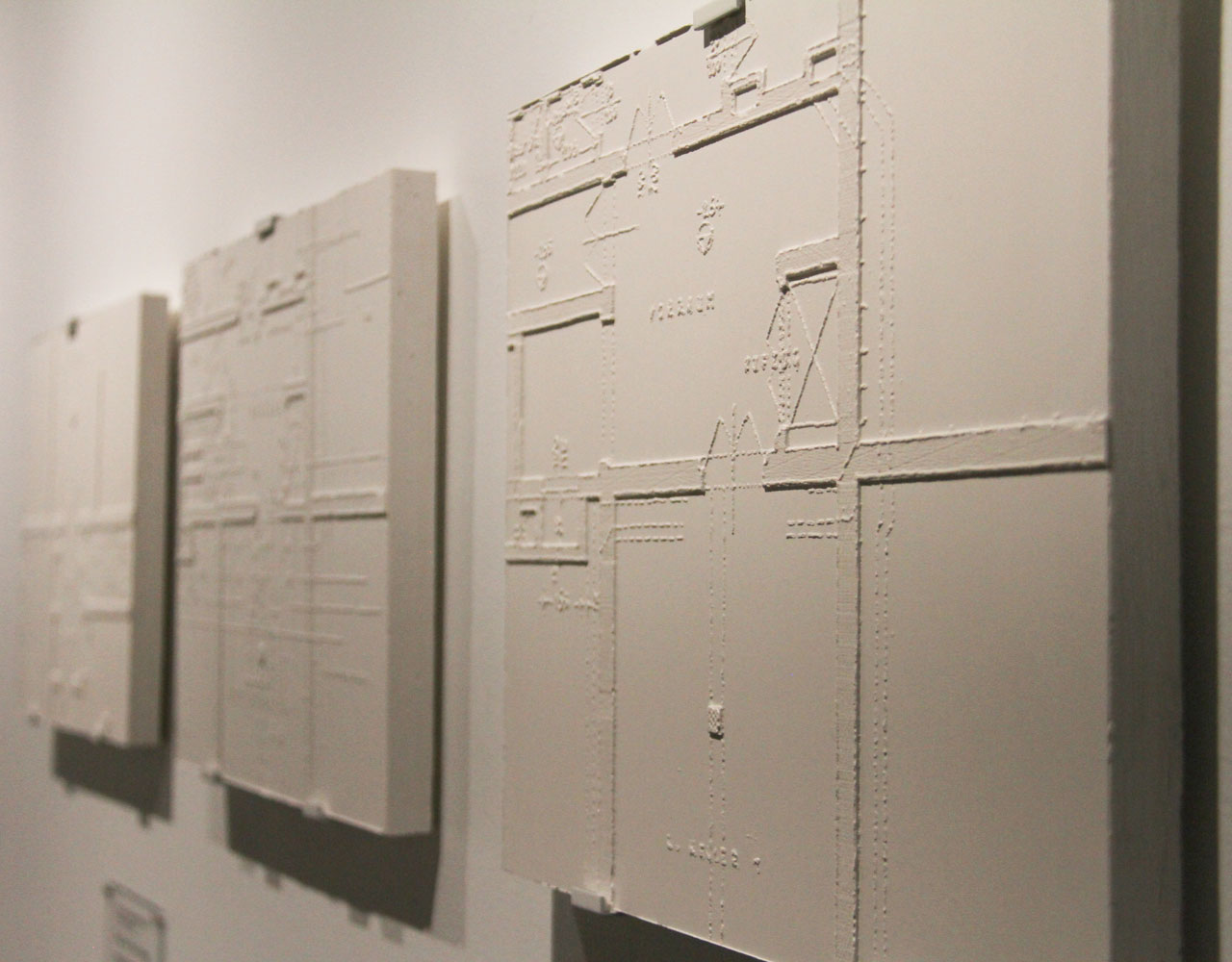The Azrieli School of Architecture and Urbanism is currently showcasing The Evidence Room, an exhibit containing over 20 of the documents used to prove Auschwitz was a death camp.
The all-white exhibition presents casts of drawings, photos, and correspondences that have been covered in plaster to replicate the real pieces. The death camp was, and is coined as the “The greatest crime ever committed by architects.” The exhibit was created by Robert Jan van Pelt, Anne Bordeleau, Sascha Hastings, and Donald McKay.
The documents featured in the exhibit served as part of a key testimony used in a 2000 libel suit that used architectural findings to prove that people were put to death at the Auschwitz concentration camp. David Irving, a controversial British author, sued author Deborah Lipstadt for libel after she referred to him as a holocaust denier in her book Denying the Holocaust. Irving went on to lose the suit.
In the 2000 court case, van Pelt had to prove that there were gas chambers inside of the rooms to drop Zyklon B tablets, used to kill over one million people at Auschwitz alone.
“If you can’t fill a void, you can’t prove that it happened. No void means no Holocaust, and that’s where casting filled this void.” Bordeleau said in an interview.
The undressing room of a crematorium, opening the door of a gas chamber, and documents ordering the creation and alterations of the crematoriums were just a few of the artifacts recreated for the exhibit.
The bright lighting of the exhibit sets a heavy and ghostly tone to the exhibit, while still allowing every fine detail to be seen when looking at the casts from the front.
Bordeleau, a professor at the University of Waterloo, held an informal presentation on Jan 31, and talked about the process behind creating the exhibit.
An expert of the casting technique, Bordeleau was eager to assist van Pelt with his work, feeling like she had a responsibility to honour the events of the past.
“I’m interested in casting, but I’m also interested in memory and our relationship with history,” Bordeleau said.
“It’s not about any one piece, it’s about [the exhibit] as whole, and trying to bridge the gap in history,” she added.
Bordeleau said that one of the prominent struggles the team of architects faced was trying to balance the aesthetics of the exhibit, without overshadowing the history they were representing.
“The fact that this isn’t an easy topic doesn’t mean that we shouldn’t be engaging with it. I think it gives us even more reason to present this in a manner where it can be no longer contested,” she said.
Laura Elliott, a fifth-year architecture student, said that the exhibit presents the past in a new and innovative way.
“I think the way it was done was very respectable and unique, and if it had been the regular documents, it may have been less appealing to look at,” she said.
The exhibit itself is just a small portion of the exhibit, as it totals 60 pieces in all, including casts of ladders, doors, and the chambers that proved Auschwitz’s intended purpose as a death camp.
The full exhibit is currently on display at the Royal Ontario Museum (ROM). The free exhibit is open in the Architecture Building at Carleton from Monday to Friday, and will continue to run until Feb. 16.
Photo by Meagan Casalino






